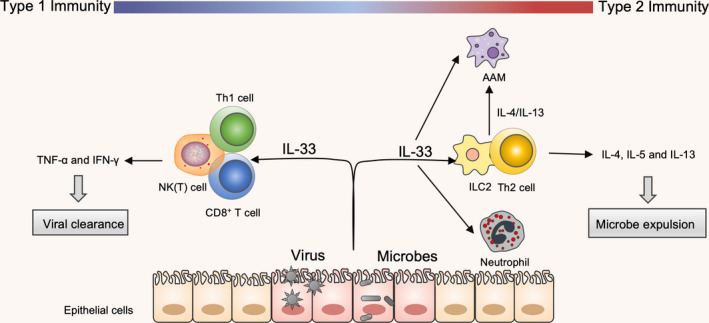Figure 1.

Regulation of distinct modules of IL‐33 in host defence. Type 1 immunity and type 2 immunity are important for the host defence. IL‐33 is expressed by several cell types, but the primary contributors are epithelial cells in barrier tissue. In response to an invading infection, IL‐33 is released from the necrotic cells in order to recruit these immune cells. During a viral infection, released IL‐33 can enhance the function of Th1 cells, NK(T) cells and CD8+T cells via TNF‐α and IFN‐γ, thus acting as a protective antiviral response. During microbial infection, IL‐33 activates and expands ILC2s and Th2s, and recruits eosinophils and alternatively activated macrophages (AAMs). These immune cells feedback on the tissue via IL‐4, IL‐5 and IL‐13 and limit microbial infection.
